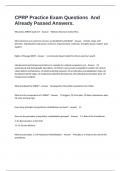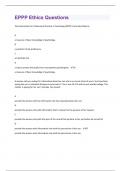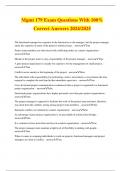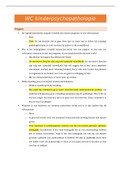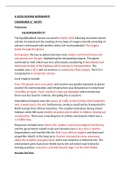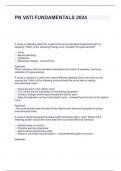Exam (elaborations)
CPRP Practice Exam Questions And Already Passed Answers.
- Course
- Institution
What does WRAP stand for? - Answer Wellness Recovery Action Plan What elements are central to recovery as identified by SAMHSA? - Answer Holistic, Hope, Self-direction, Individualized and person centered, empowerment, nonlinear, strengths-based, respect, peer support Rights of Passage (...
[Show more]
